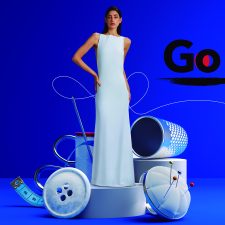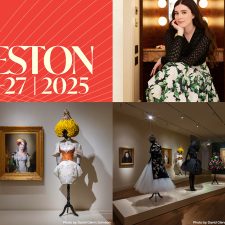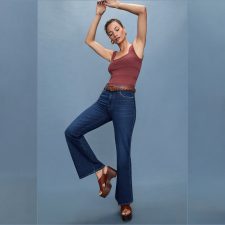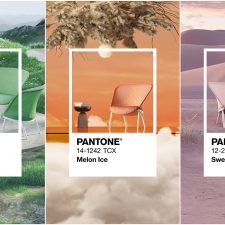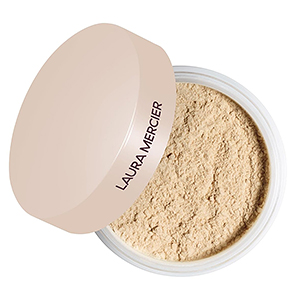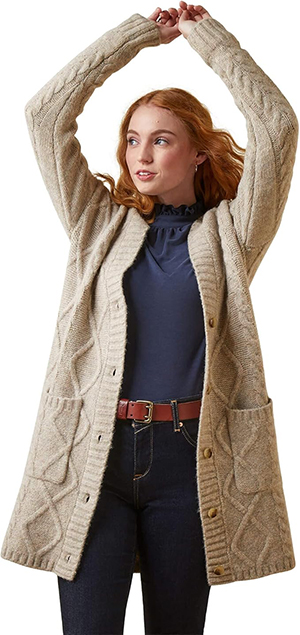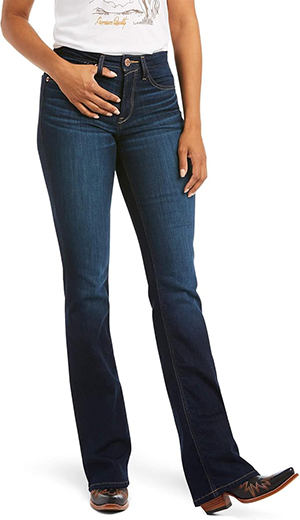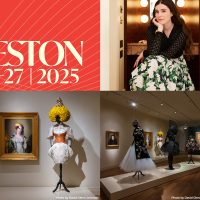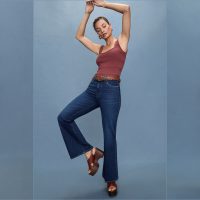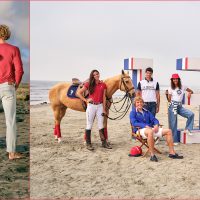A Methodological Study of the Significant Topological Form.
Roberto Zanon’s new book “Gioiello e Progetto / Jewellery and Concept” has been released by CLEUP sc, the Publishing Cooperative of the University of Padua.
Research on 3D forms created from the two-dimensional forms fully belongs to the sphere of gold-smithing; many of the processes carried out in this field derive from plate-forging or wire-working techniques.
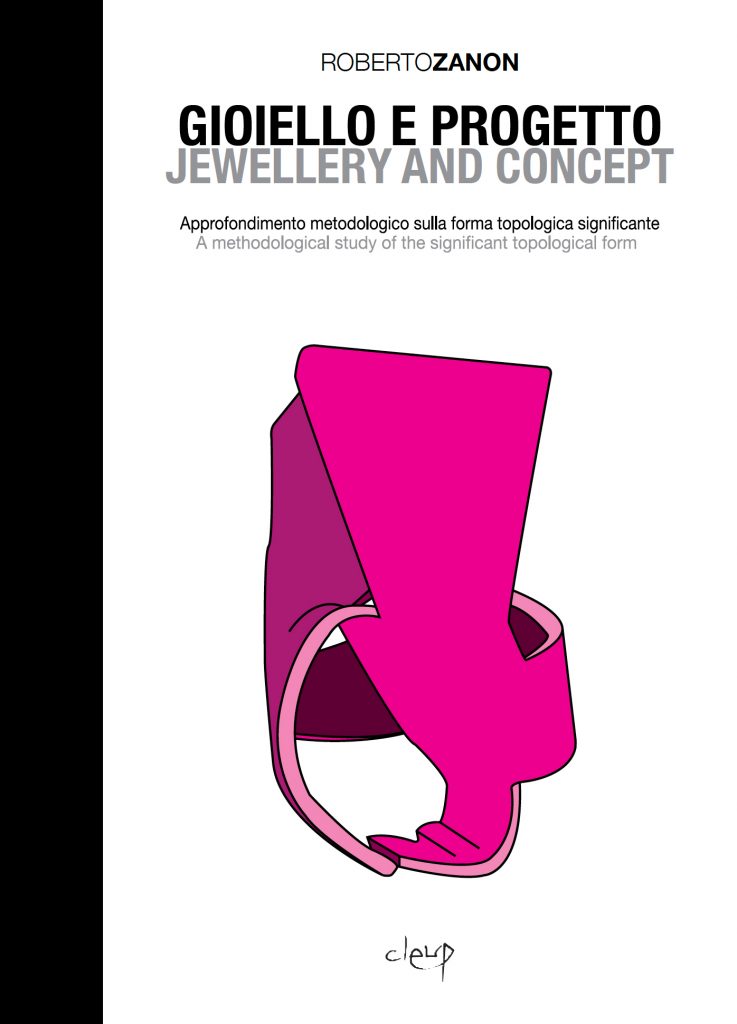
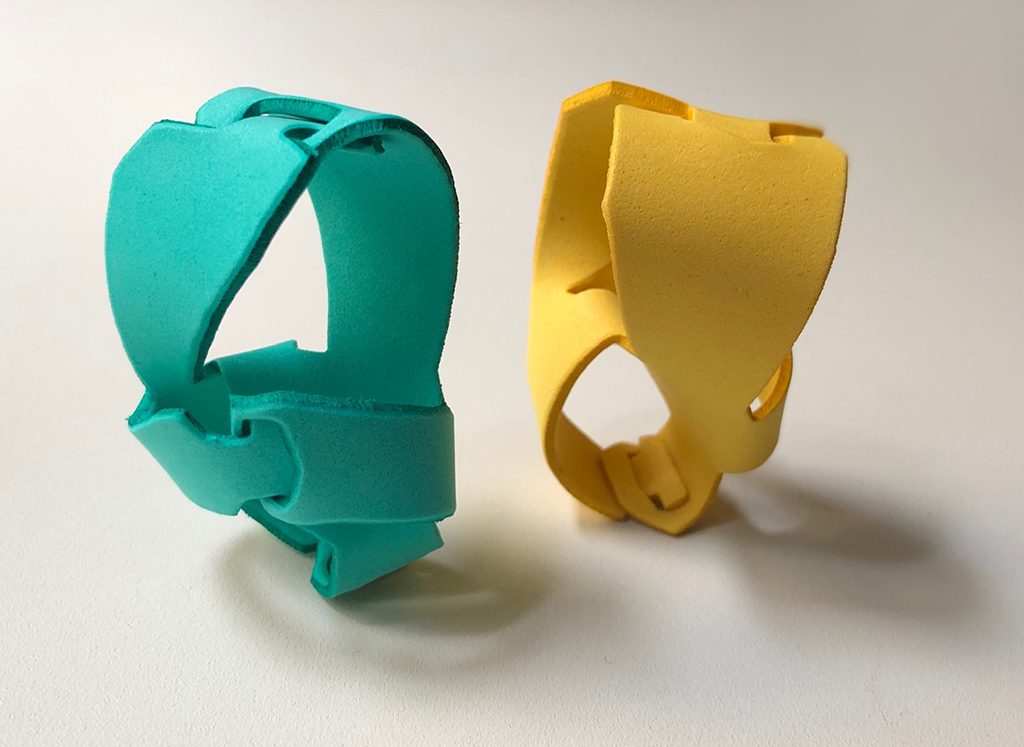
The study Roberto Zanon presented on “Gioiello e Progetto / Jewellery and Concept” intends to focus on the achievement of formal and significant results that start from flat forms and then become part of the research on contemporary jewelry.
The “Gioiello e Progetto / Jewellery and Concept” also includes a number of contributions from authoritative scholars, who used their in-depth-knowledge to discuss and interpret the jewelry featured on the book.
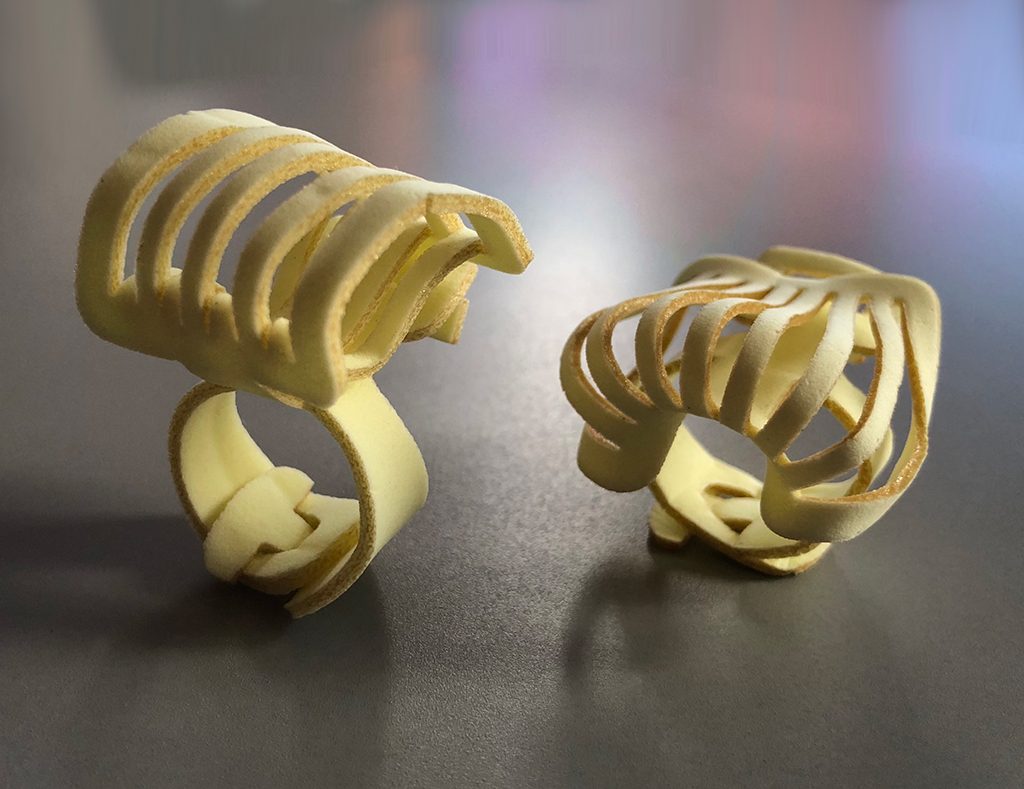
In the Sgabbia ring, made entirely of PVA, the modulation of the shape is obtained by either a breath of fresh air or by moistening the parts to be shaped. The perceptual complexity of the artefact is given by a simple repetition of a series of elements that alternatively control and define a volumetric space varying each time but consistently identified in its transformations.
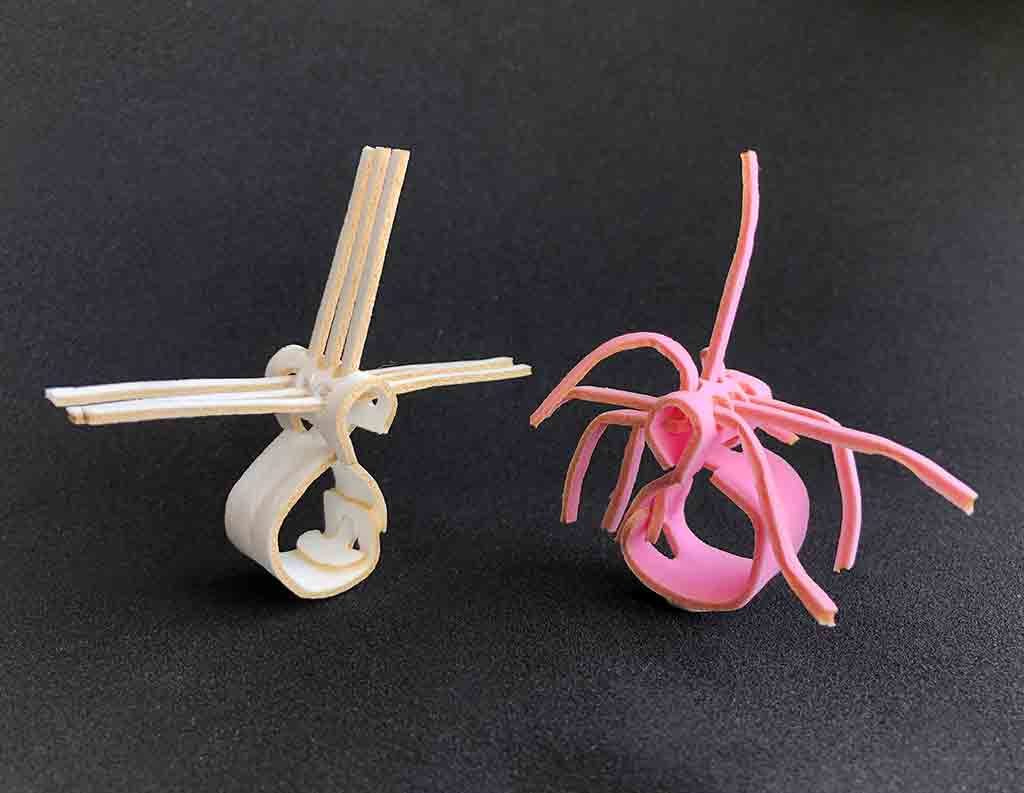
For many years, I have been interested in the theory and design of jewellery. This interest has indeed gone hand in hand with my lecturing activity. My goal has invariably been to create a series of exercises and tests to enhance my abilities, and those of my students, by investigating and interpreting three-dimensional forms.
— Roberto Zanon
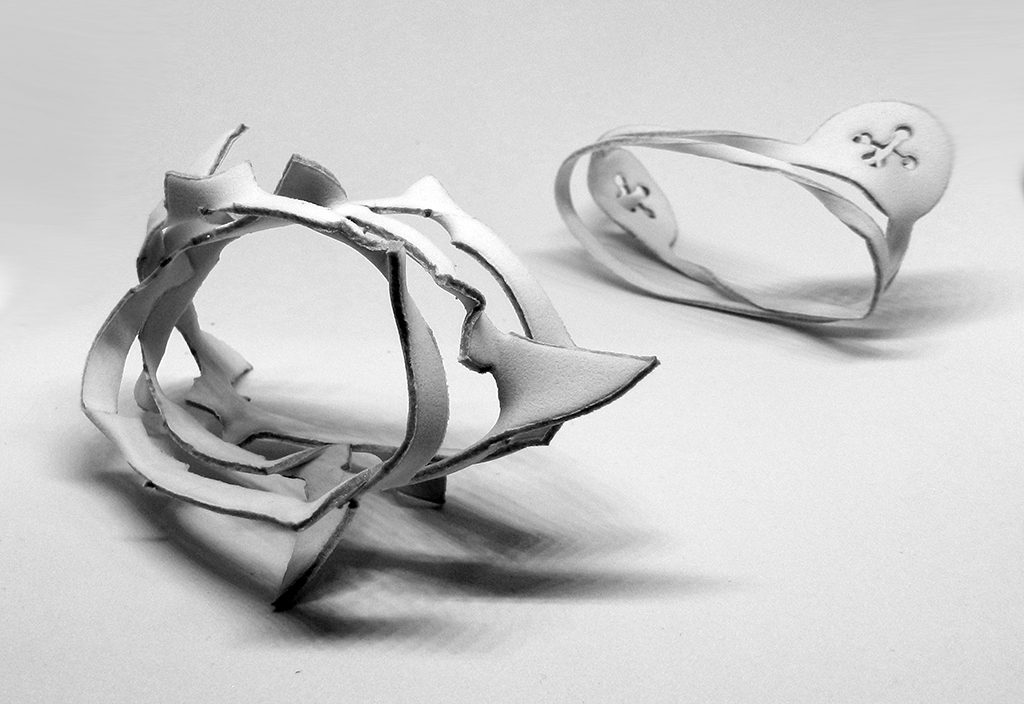
The Pippe Bracelet is a metaphor for the contemporary world, where the complex but clear matrix that lies at the base of many situations often evolves into mysterious, opaque and inscrutable developments. This jewel epitomises a personal study of a project. The bracelet, made up of two separate parts, originates from a defined and calculated shape that turns into its 3D counterpart through a subjective interaction with the wearer who will shape it.
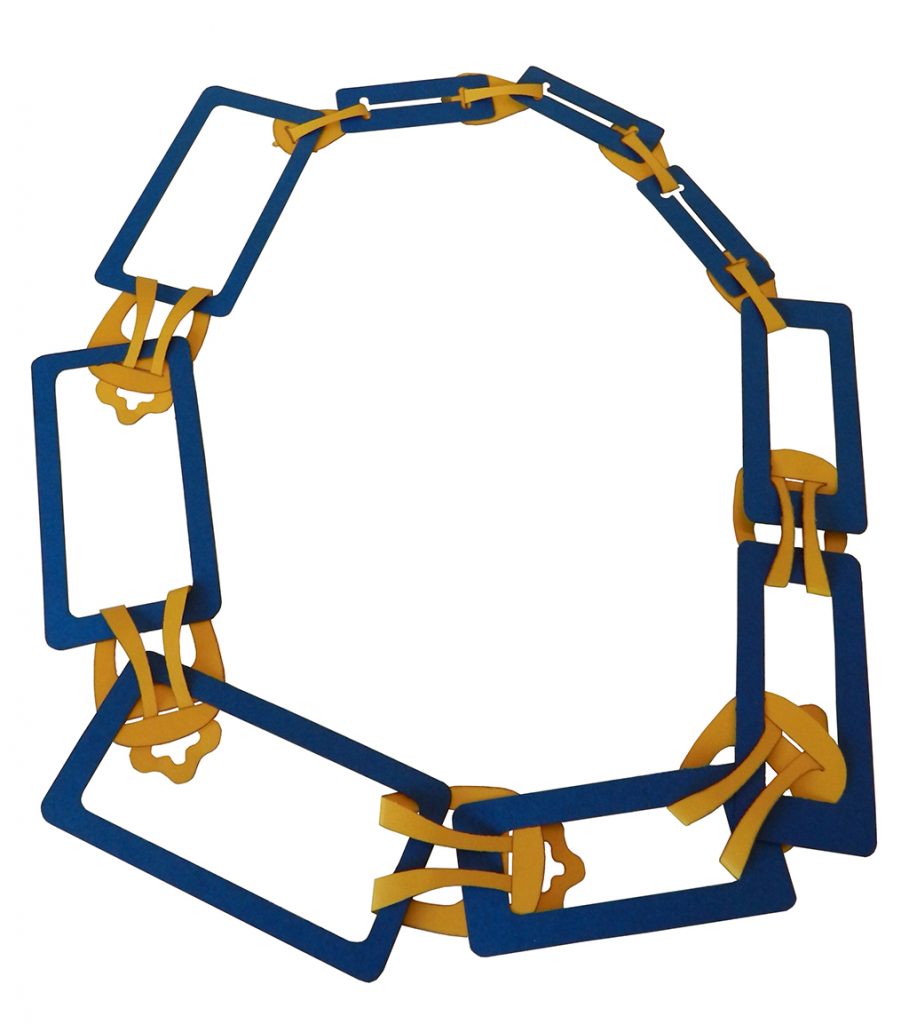
The Progresso Necklace “spontaneously” calls to mind a model from the Victorian era. The original idea was to optimise material use and minimise waste. Shapes contrast with their geometry in a quest for dynamism that alternates different modular elements in sequence. For this “variability”, the necklace can be easily combined in several different sequences, playing with and even customising the final dimensions
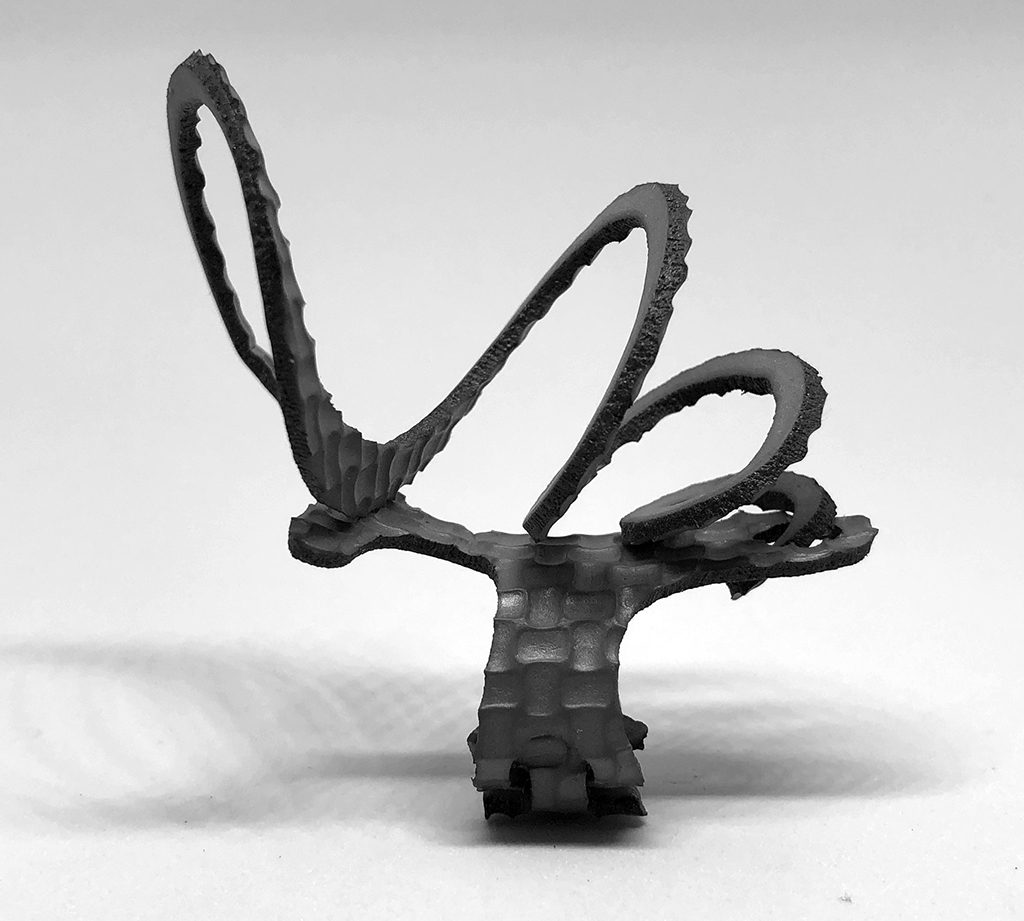
Anello Ring.
Starting from a construction technique used in pop-up books, the Fuoco Artificiale (Firework) Ring was obtained by circumscribing a complex micro-space generated by forms organically organized in their two-dimensional configuration. The result is an exuberant form, a consequence of the space occupied by the constituent parts. The final shape is harmonious and consistent because it respects the characteristics of the material, which is deformed but retains its intrinsic structural qualities.
All the jewels I propose in this volume do not belong to traditional jewellery. However, they follow a methodological direction so as to address the definition, appropriation and in-depth knowledge of three-dimensional forms associated with their signifying value in relation to jewellery starting from two-dimensional forms.
— Roberto Zanon
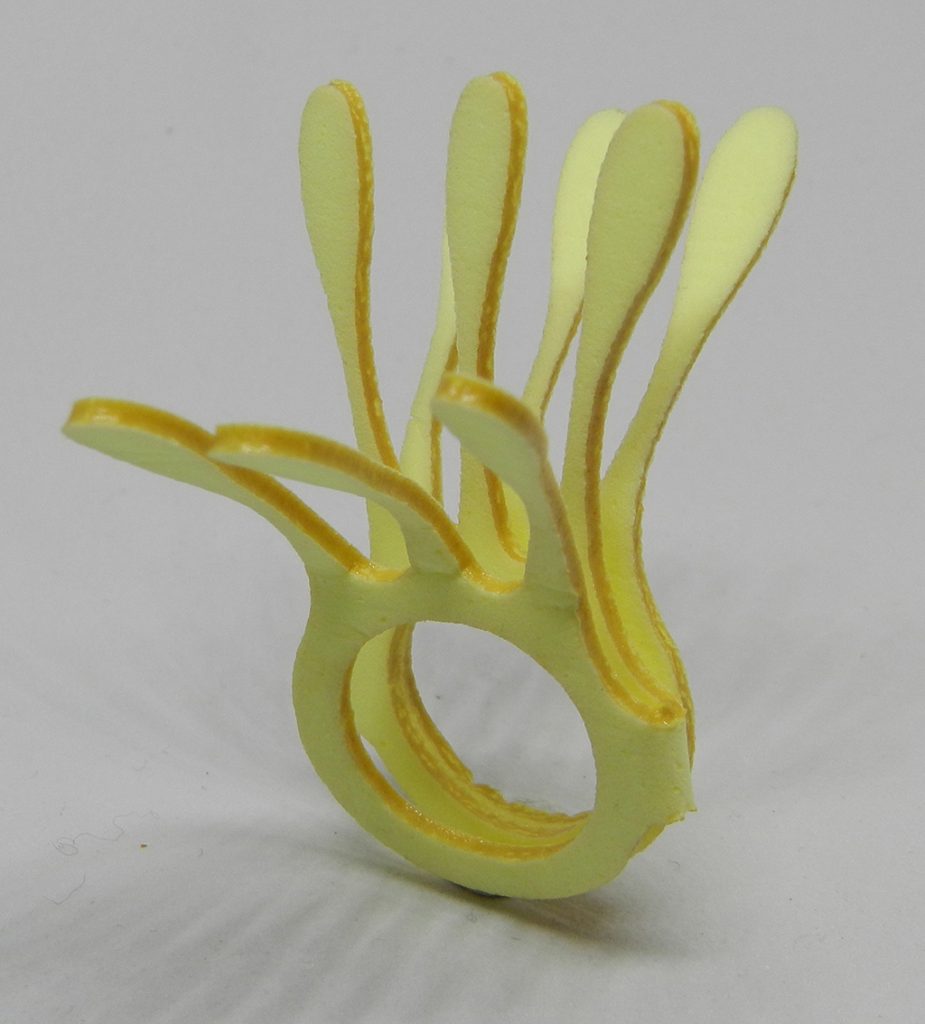
The Puntonde Ring was designed as a jewel full of energy and personality, without neglecting the need to make it an object of affection, like all jewels handed down. It has a strong symbolic value since its initial proportions are in line with the law of the golden ratio. The ring, made of PVA, is obtained by starting from a flat shape that is carefully bent, after being moistened, for it to be worn.
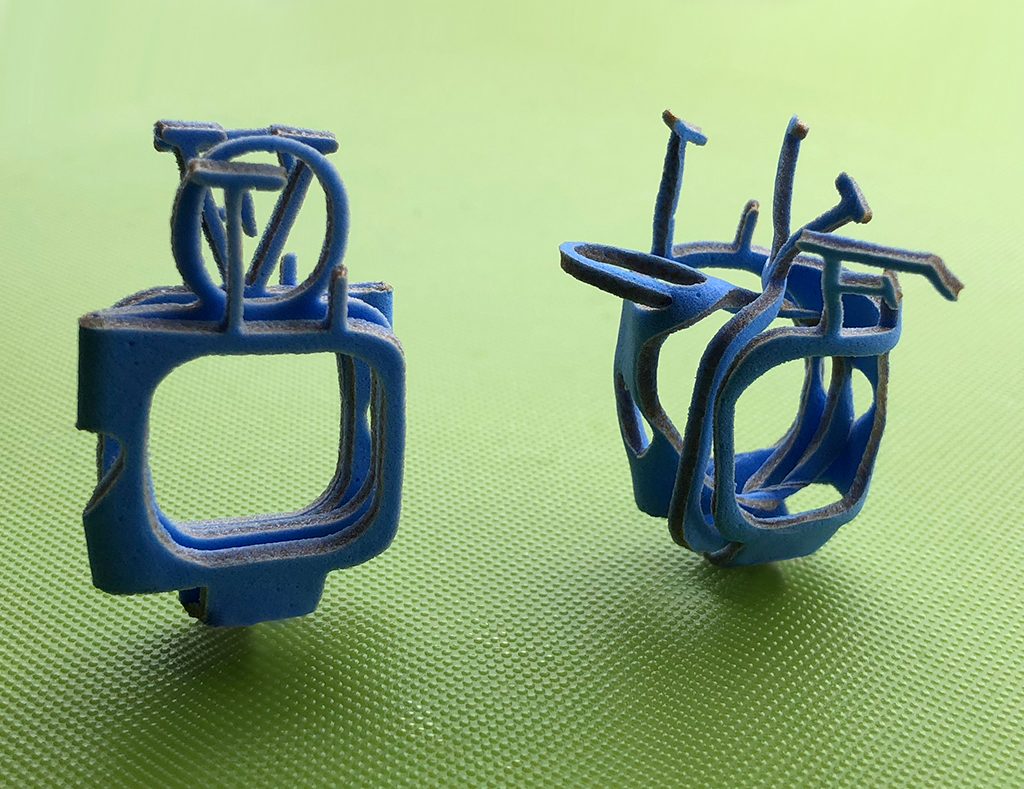
The parallel between the representation of the word “LOVE” in its formal aspect and its real meaning is evident. If the Evol Ring is folded in a different way, letters are rearranged to form the “evol” anagram – thus “evol…ving” into a custom representation.
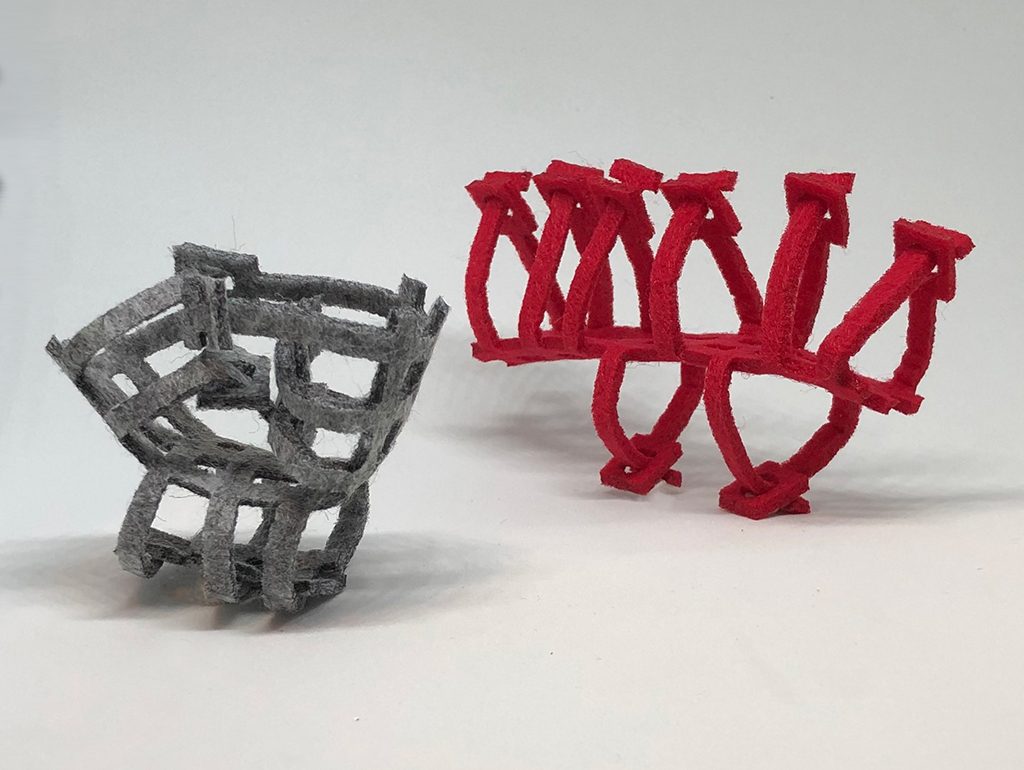
Structured as a naked exoskeleton, Eso Ring reveals its clear structural essentiality with an articulated outline intended to accompany the movements of the finger that will wear it. It is therefore meant as a jewel faithfully following the owner’s movements but also capable of curling up in a ball and shutting itself away from the outside world.
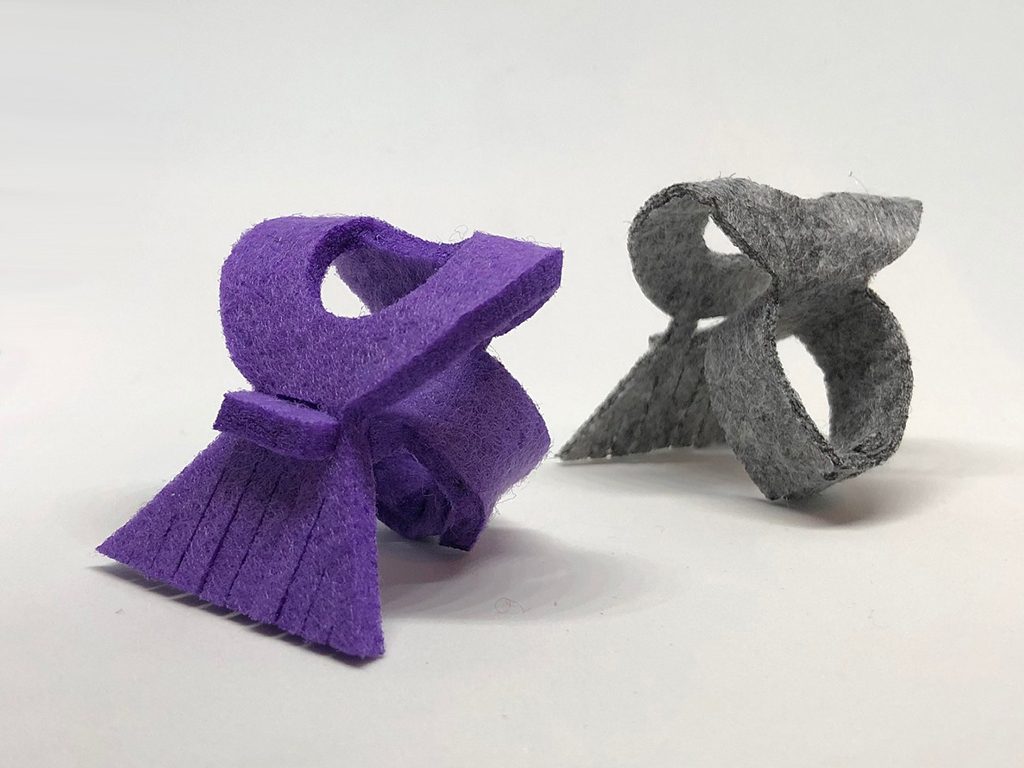
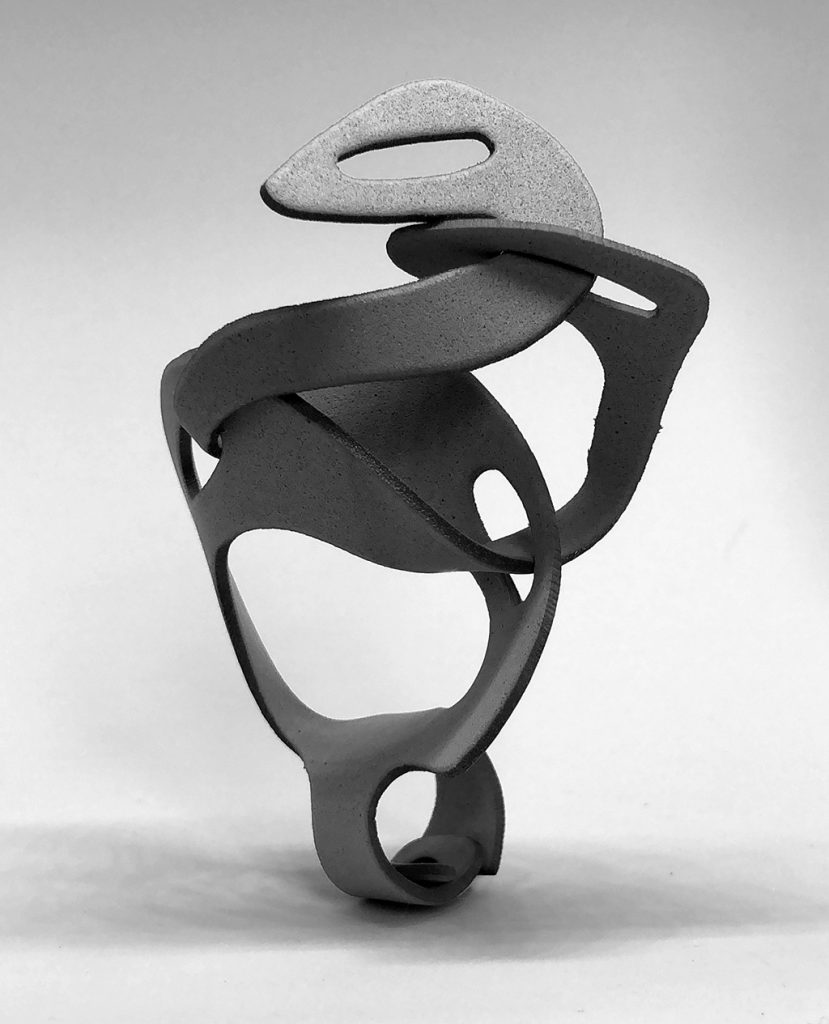
Roberto Zanon, Architect and PhD in Design, is Professor of Design at the Academy of Fine Arts in Venice. For the types of Cleup he published, among others, the volumes: Allestimento per la moda (2003), Scenografie di moda (2006), Contesto. Suggestioni percettive (2009), Verso il design (2013), Dall’Accademia per l’Accademia (2018).

Click here to purchase “Gioiello e Progetto / Jewellery and Concept” Book by Roberto Zanon.
CREDITS:
© 2021. All rights reserved. All images and content are published by the exclusive written permission of Roberto Zanon.
Title: JEWELLERY AND CONCEPT. A methodological study of the significant topological form.
Author: Roberto Zanon
Other Authors: Bianca Cappello, Paolo Lesti, Giuliano Lombardo, Edoardo Malagigi, Alessandra Zabbeo, Pietro Zennaro
Publishing House: CLEUP sc – Cooperativa Libraria Editrice Università di Padova/ Publishing Cooperative of the University of Padua
ISBN: 978 88 5495 315 4
Edition: February 2021
Pages: 502
Illustrated: in color and b / w
Cover Illustration – Arp Ring
Graphic Designer – Greta Bignami
Languages: Italian and English
Translations – Studio de Novo, studiodenovo.com
Format: 13×18 cm
Tags: 2D, 3D, 3D Design, Academy of Fine Arts Venice, Accessories, art, artisanal, arts crafts, books, bracelets, concept jewelry, contemporary design, contemporary style, education, exclusive works, fashion, jewellery, jewelry, materials, necklaces, rings, Roberto Zanon, synthetic materials, Top
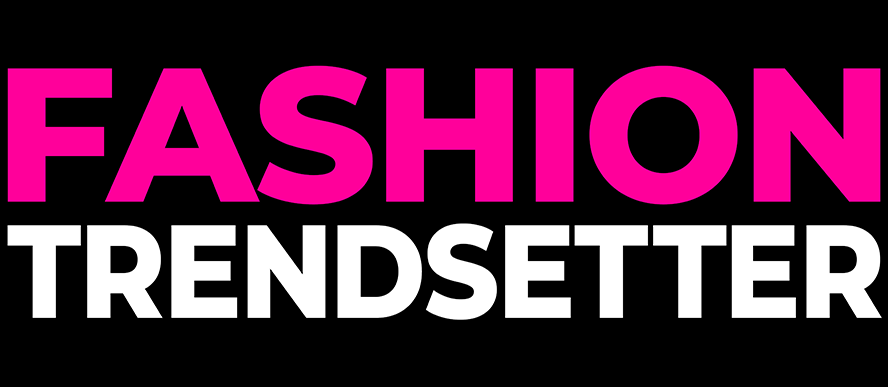
 Share On Facebook
Share On Facebook Tweet It
Tweet It


